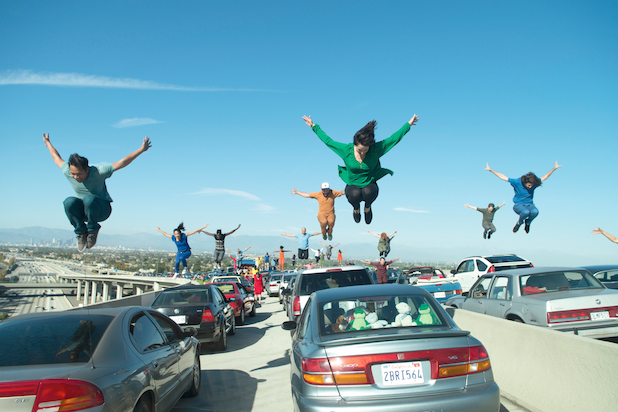I have structured my life so I can live without a car. That choice may seem impossible, and, at times, it is impractical. Like any counter-cultural behavior, it initially requires effort to adjust.
I can attest, however, that car-free living is a healthful, fiscally responsible and even joyful pursuit in later middle age.
When I travel for work to Chicago, New York, Washington, D.C., and other big cities, I never rent a car. I stay in the heart of downtown and use mass transit, and my feet. That discipline is doable in the Twin Cities, too, even if you practice it only on certain days.
Discipline? Practice? Some people shrink from those words. Certainly, I make use of my husband’s vehicle — a 9-year-old, manual-transmission pickup — when I want to get to my weekend yoga class or my favorite suburban dog park. It also helps that the two reasons for my old Soccer Mom van have grown and gone.
My purpose is not to suggest that you never drive again at all. Nor do I intend to sermonize or gloat. My hope is to convince you that driving less — and using alternative forms of transportation more often — is a calming, community-minded, Earth-conscious habit that, like mindful eating, becomes easier and more self-sustaining over time.
Five benefits of a car-free lifestyle

Benefit 1: I exercise more. I seldom post in the 10,000 Steps Facebook group I joined because, unlike the other participants, I rarely struggle to achieve that goal. Between walking to and from work, having a job that requires me to move throughout the neighborhood, and riding the bus or train to my appointments — which generally involves some walking — I have my feet on the street an average of 4 miles a day.
A Metro Transit ad in the still transit-lacking Twin Cities claims that people who commute by bus or train walk 20 percent more than do those who drive to work. More than 76 percent of Americans commute to work in their own cars, a 12-point jump from 1980.
Having access to your own vehicle is more convenient and saves you time. I hear that often from over-stressed workers and working parents. Even if they changed their commuting habits only one day a week, they would recognize how physical exercise can actually help them unwind and relax.
Benefit 2: I save money. My older son, who now owns my red Toyota Prius, pays $1,150 a year for car insurance. I routinely spent $200 a month on gas during the years I commuted from Northfield to St. Paul. My transit card, by contrast, costs about $30 a month, and my employer reimburses me for any work-related rides.
Granted, I am planning to invest in a high-end bicycle for my big birthday in July — a purchase I haven’t made since my college senior was a baby — but I can justify the expense now that I’m no longer servicing a car for my commute.
Benefit 3: I am part of my community. Living in the urban core makes a multimodal lifestyle both easy to navigate and an adventure. I am a 12-minute walk from the Green Line train to the north, a Whole Foods store to the east and the charming Grandview Theater to the south.
If I drove to these locations, I would lose the opportunity to observe architecture, peruse Little Free Libraries, and smile at barking dogs and blooming trees. I also would miss the chance to greet my neighbors. “In yesteryear’s compact, pedestrian-friendly communities, people walked to church and corner stores, and talked with friends on front porches while kids played in streets and alleys,” writes Katie Alvord in Divorce Your Car! (New Society Publishers, 2000). “Making communities walker-friendly can bring back that lifestyle.”
Each of us has the ability — and the authority — to take back our streets from the growing dominance of cars in our fast-paced culture. The City of Minneapolis has a pedestrian advisory committee. St. Paul Smart Trips, in my town, sponsors “St. Paul Walks.” Go online to sign a pledge that, as a driver, you will always stop for pedestrians at crosswalks, whether marked or unmarked. See it as an opportunity to catch your breath.
Benefit 4: I have time to think and read. As a hyper-scheduled person, I need enforced alone time. I use my bus and train rides to read the news on my iPhone, to catch up on e-mail and, sometimes, just to rest my eyes. Leave the driving to us? Happy to do so.
Benefit 5: I mingle with folks outside my middle-class bubble. Charles Zelle, commissioner of the Minnesota Department of Transportation, spoke at a recent Saint Paul Chamber of Commerce luncheon about concrete and bridges, the ride-sharing services Uber and Lyft, making the state’s transportation system “work for the next generation” and the inherent class bias that underlies the resistance to mass transit.
We have to deal with “the identity politics of transit,” Zelle said, “the notion that ‘those people’” ride the bus or train, that “we don’t take transit.”
We, of course, is the professional middle class, people who see their own car as their birthright. As a Caucasian, I am often a minority on mass transit — except for the Blue Line when it is heading from the suburbs to a Twins game or the express commuter bus between Uptown in Minneapolis and downtown St. Paul.
I have seen homeless people on the Green Line lugging everything they own. I have sat amid boisterous Somali-American boys who disrupted my reading. I have quietly changed seats when a mentally ill person began to spout obscenities. I have never felt threatened or afraid.
This is the world. This helps me recognize my privilege and inspires me to work toward a greater understanding of why mass transit is essential, for all of us.
